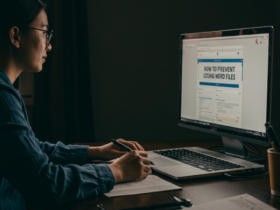Advertisement
Intro of How to take notes like a Harvard student
No one understands the importance of effective note-taking better than Harvard students because it is extremely critical to their academic success. With Harvard’s intensive curriculum, students are encouraged to note down and remember information using sophisticated techniques to maximize their efficiency.
Adopting the note-taking techniques of students at the Ivy League can help learners of all ages, including high schoolers, achieve their educational goals.
The methods used by Harvard students throughout their education will be elaborated on in this guide. Active listening techniques, right tools, and the most effective methods will be discussed to put you one step closer to achieving the highest standards of academic excellence. As a result of this guide, a productivity and learning-enhancing note-taking framework will be at your disposal.
The Science Behind Note-Taking: Why It Matters
Dealing with materials in any educational setup is tedious, but without the obvious task of putting marks on a page, teachers often struggle with organizing their notes. Note-taking is an engaging method to work with your thoughts and perform analysis, put them down in writing, which actively engages the student in the process.
How Effective Note-Taking Improves Learning
Handwriting notes mandates students actively listen throughout the process and understand what is being taught. Advanced learners appreciate the capture and retrieval framework for structuring their notes. During class, Harvard students are known to employ evidence-based approaches to maximize their description capture.
Taking notes by hand, in contrast to typing them, promotes deeper processing of information due to the employment of multiple cognitive functions. Integrating review sessions within the framework of construction during noted sessions enables students to easily retrieve concepts during testing periods.
Research on the Best Note-Taking Techniques
Taking notes with the intention of transcribing rather than summarizing and paraphrasing inhibits the learner’s ability to retain. Some procedures that promote active learning are the Cornell Method, Mind Mapping, and Outlining – all of which require participants to analyze, summarize, and reorganize information at deeper levels. With these techniques, students definitely do not record their lectures passively.
Step-by-Step Guide: How to Take Notes Like a Harvard Student
After recognizing the significance of note-taking, it is time to present step-by-step instructions that allow you to approach notes like a Harvard student.
Preparation: Set Yourself Up for Success
Choose the Right Tools
The tools one uses can play a significant role in enhancing their note-taking capabilities. Harvard students, for instance, switch between physical and digital tools based on personal preference.
-
Digital Tools: Students who prefer taking notes on their gadgets tend to use Notion, Evernote, and OneNote. These tools enable users to arrange notes in notebooks, assign topic tags, and sync notes across devices.
-
Paper Tools: Students who wish to have their notes written by hand tend to popularize high-quality notebooks like Moleskine and Leuchtturm1917 for their clarity and organization.
The type of tool chosen is subjective, though it is advisable to select one that offers effortless organization and review.
Know Your Lecture Format
Before the lecture, comprehending how the course is structured is fundamental. Is the lecture more content-focused or does it have a lot of discussion?
-
Lecture-heavy Classes: For content-heavy lectures, concentrate on getting the main ideas and central key points.
-
Discussion-based Classes: Here you would want to zoom in on arguments, counterarguments, and the key concepts raised during the discussion.
Grasping this aspect helps to customize one’s note-taking style to the lecture’s outline.
Active Listening: The Key to Quality Notes
Engage with the Speaker
The foremost step during note taking is, active listening. Harvard students appreciate that great notes come from well integrated lectures, not just rote transcription.
-
How to Stay Engaged: Try figuring the basics of the concepts being taught in class by asking pondering questions such as, “What does the teacher intend to teach?” or “What do I already possess which relates to this topic?”
-
Summarizing Mentally: Rather than attempting to write down every single word, write shorthand sentences capturing the essence of a point. This level of thinking encourages deeper cognitive processing of the material which in turn improves retention.
Identify Key Points, Concepts, and Themes
Some information presented in a lecture is more important than others. The aim here is to figure out the main ideas, notable points, and overarching themes.
-
Look for Cues: Through emphasis, professors tend to repeat items, alter their tone, or even use nonverbal techniques such as writing things on the board.
-
Prioritize Concepts: Concentrate on those fundamental areas which explain the greater part about the subject, including but not exclusive to definitions, theories, key dates of relevanthistory, and even well-known case studies.
By concentrating on capturing key points, you maximize relevancy and conciseness of the notes.
Use a Note-Taking System: Harvard’s Preferred Methods
Like any Harvard student, using a systematic method for note taking is the first step one needs to master. Below are some techniques preferred by highly efficient learners.
The Cornell Method
The Cornell Method is one of the most utilized techniques of note-taking among Harvard students that utilizes a page divided into 3 sections:
-
The Cue Column: Write questions or keywords that you can revisit after the lecture.
-
The Notes Section: Note down the main points of the lecture in this section.
-
The Summary Section: After class, write a brief summary of what you have learned at the bottom of the page.
Why It Works: This approach helps make lectures passive since students are already quite engaged by writing ‘cue’ questions that will make reviewing easier in the future.
How to Use:
Students should focus on capturing key concepts in the notes section during the class.
Instructors should ask students to summarize what they learned and include pivotal cue questions that will enhance reviewing during the session.
Mind Mapping
Students often struggle to organize complicated ideas and concepts, and mind mapping can be a great visual method of hierarchical note-taking. Compound subjects that require seeing connections across topics are best aided with mind mapping.
Why It Works: Comprehending how concepts relate to one another can be greatly facilitated through mind mapping by providing a better understanding of the information in question.
How to Use:
- Students should begin with a main theme or idea in the center of the page.
- Use lines, arrows and symbols to show how some ideas are related.
- Branch out with associated concepts, definitions, or facts.
Outlining Method
Another technique that is popular is the Outlining Method. This method organizes notes by using bullets and indentations which helps hierarchical structure easier to understand.
Why It Works: You can easily review notes because of the specific structure that was imposed.
How to Use:
- Use bullet points to indent subtopics to topics. Start with main topics.
- Indent details and topics to show the more specific relationship with the broader topic.
Boxing Method
Boxing Method divides information into distinct “boxes” for each topic or concept. This method is great for visual learners who like information presented in fragments and prefer seeing things organized.
Why It Works: Themes or topics can easily be distinguished at a glance.
How to Use:
- Put borders around every topic or idea you capture when note taking. Draw boxes.
- Put relevant sub-topics and details in each box.
Organize and Review Your Notes
After the Lecture: Review and Revise
Taking notes is the first step for any Harvard student. Real magic happens after class when they review and revise notes.
-
Review Within 24 Hours: Research indicates that reviewing notes within a 24-hour timeframe assists in solidifying information retention from short-term to long-term memory.
-
Summarize the Lecture: Make a concise summary of the lecture using your notes, highlighting the most crucial aspects. This not only reinforces the material, but also ensures comprehension of the information taught.
Color Coding and Symbols for Quick Reference
Illustrations and color codes are wonderful strategies to make summarization much easier precisely because they enable the notes to be easily scanned. With the help of symbols, an individual may denote marked areas of importance or concern and with colors, the area can easily be identified.
-
Color Coding: Assign various colors to different types of information, such as definitions, examples, or main ideas.
-
Symbols: Mark key ideas with symbols such as stars or asterisks. Use arrows for displaying relationships between ideas.
How to Use: Pick a color scheme that is logical for you. Red can be used for important concepts, blue for supporting ideas and green for examples.
Applying Your Notes: Using Notes Beyond the Classroom
How to Create Actionable Study Notes
The true value expected from one’s notes is achieved when practical study materials are formulated. Single example being the Harvard student’s protocol for their notes doesn’t just involve reviewing them but actively working with them provides more informative details which facilitate learning.
-
Summarize: Preparing for reviewing suggest a condensed version is created so that it’s easier to navigate to the expected goal without additional hassle.
-
Flashcards and Quizzes: These can be modified into key pointers which strongly improves memory retention.
-
Create Study Guides: The notes gathered can be categorized into guides focusing on the major themes of importance or concepts expected from a certain area.
Incorporating Notes into Assignments and Exams
The notes can offer added information that strengthens the basis being used for the preparation of the assignment and exam.
-
For Essays: Use your notes to plan your essays. Extract relevant quotes, examples, and supporting arguments that can be included in your writing.
-
For Exams: Analyze your notes to determine the major concepts and topics that will be tested. Make focus sheets to track high-yield material.
You can also read How to recover unsaved Word files (easy fix!)
Common Mistakes to Avoid When Taking Notes Like a Harvard Student
Even with the most detailed notes, people tend to make the same mistakes. Here are a few mistakes you should avoid:
-
Writing Everything Down: Don’t write everything down. Try capturing only the key parts and essential details.
-
Failing to Review Your Notes: Strong recall ability is important for learning. Make sure your notes are not stale or unused.
-
Not Asking for Clarifications: If something in class does not sit well with you, make it a point to clarify it with the lecturer or your colleagues.
My Opinion| Mastering the Art of Note-Taking
To take notes like a Harvard student, you do not have to write more, because mastery in this method is writing smarter. By implementing Harvard’s Cornell Method, Mind Mapping, or Outlining, students are able to take purposeful notes that aid in retention. Students in Harvard know that doing well in school is not only having the knowledge but also knowing how to harness the information that one learns.
I encourage you to apply these techniques within your own note-taking system. With practice, you will be able to take notes like a pro, just like the students at Harvard University.













Leave a Reply
View Comments